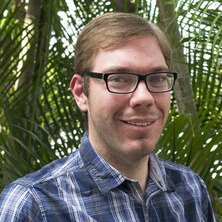Last updated July 17, 2018 at 9:34 am
With echoes of the 1980s movie Back to the Future, a group of Australian and Swiss physicists have proposed a device that would be a crucial component for next-generation technologies.
The flux capacitor was a crucial part of the time machine DeLorean in Back to the Future. Unfortunately the real thing does not enable time travel. Credit: iStock
Ever since Doc Brown built the most stylish time machine of the century, the words ‘flux capacitor’ have inspired scientists and non-scientists alike.
A recent breakthrough by Australian physicists took this pair of techno-babble words seriously and developed a device that will be crucial in real implementations of next-generation technology, including the elusive quantum computer.
The research proposes a new generation of electronic circulators, which are devices that control the direction in which microwave signals move.
“Unfortunately this effect does not allow us to actually travel back in time,” said Professor Tom Stace, of the Centre for Engineered Quantum Systems (EQUS).
“Instead, it means that signals circulate around the circuit in only one direction, much like cars on a roundabout.”
Making a functioning quantum computer is incredibly hard. Just making a single qubit – a quantum bit of information – requires isolating it from all sources of interference, like vibrations, radio waves, and even heat.
In a quantum computer, magnetic flux (which is just the amount of magnetic field passing through a part) is the enemy.
The delicate qubits are easily destroyed by stray magnetic fields. This is a real problem when those same magnetic fields are used to make the computer work, measuring and transmitting information.
This new ‘flux capacitor’ device uses some of quantum mechanics stranger effects to deal with magnetic noise.
Weird effect number one: Imagine a ring of superconducting wire with three small breaks in it. If it were a normal wire, no information would get between the three segments. In a superconductor, magnetic fluxes can actually jump these gaps, as long as they are small.
Weird effect number two: put an electrode in the middle of the ring, and charge it up like a capacitor. By carefully choosing how much this electrode is charged, you can cause magnetic fluxes to only jump those gaps in one direction!
Because the magnetic fluxes can only circulate in one direction, this flux capacitor breaks time-reversal symmetry. Unlike its namesake, “Unfortunately this effect does not allow us to actually travel back in time,” Professor Tom Stace (University of Queensland) said.
In the long term flux capacitors will be used to build quantum computers, while in the shorter term they could appear in mobile phones, enhancing their mobile and wifi antennas.
The two participating ARC Centres of Excellence form part of Australia’s significant strength in quantum research.
The ARC Centre of Excellence for Engineered Quantum Systems (EQUS) researchers are building quantum machines that harness the full spectrum of quantum physics.
The ARC Centre of Excellence in Future Low-Energy Electronics Technologies (FLEET) is developing a new generation of ultra low-energy electronics to address the increasing challenge of energy use in computation.































































































































































































































































